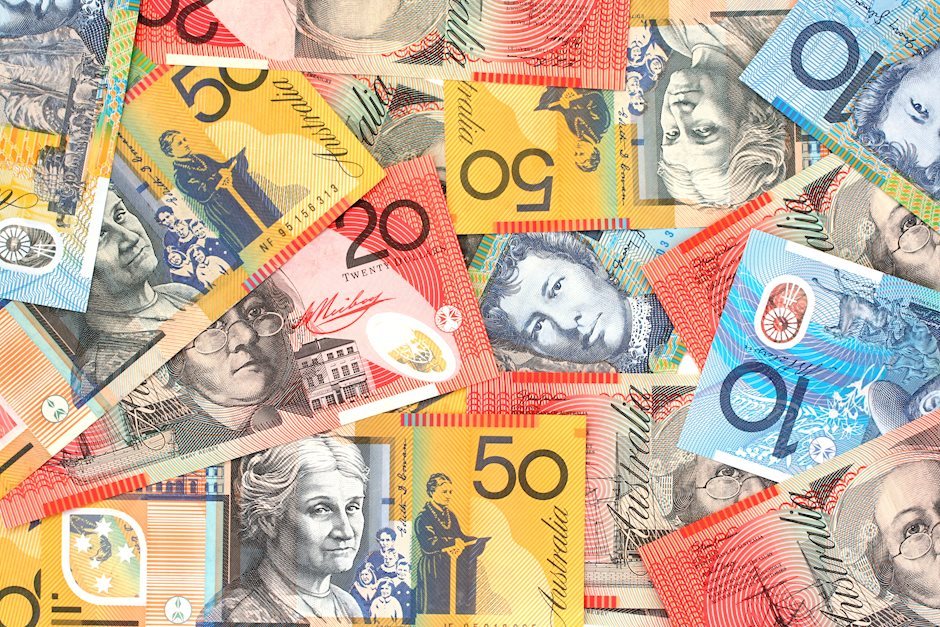AUD/USD bounces back strongly to near 0.6630 ahead of Fed policy meeting
- AUD/USD climbs back to near 0.6630 as the impact of RBA’s hawkish interest rate guidance remains intact.
- Australia’s monthly Trade Balance unexpectedly came in lowest since March.
- Investors await the Fed policy meeting in which it is expected to cut interest rates by 25 bps.

The AUD/USD pair recovers almost entire Wednesday’s losses and climbs back to near 0.6630 in Thursday’s European session. The Aussie pair bounces back strongly on the Australian Dollar’s (AUD) outperformance against its major peers despite the Australian monthly Trade Balance for September coming in weaker than expected.
The Australian Bureau of Statistics showed that the trade surplus surprisingly came in lower at 4,609 million in September against 5,284 million in August. Economists expected the trade surplus to rise slightly to 5,300 million. This was the lowest figure since March due to a decline in both exports and imports by 4.3% and 3.1%, respectively.
It seems that the Reserve Bank of Australia’s (RBA) hawkish interest rate guidance has prompted a strong recovery in the Australian Dollar. The RBA left its key Official Cash Rate (OCR) unchanged at 4.35%, as expected, in its monetary policy meeting on Tuesday and emphasized the need to maintain a policy stance restrictive due to the strong labor market and the presence of upside risks to inflationary pressures.
In addition to RBA’s hawkish guidance, expectations of a quick rollout of economic stimulus by China’s government to diminish growth risks boosted by US Republican Donald Trump’s victory in presidential elections have also strengthened the AUD. A scenario that will prompt investments, spending, and consumption in China and will benefit Australia, being its leading trading partner.
Meanwhile, the US Dollar (USD) faces some unwinding after Trump’s inspired rally on Wednesday ahead of the Federal Reserve’s (Fed) policy meeting at 19:00 GMT. The US Dollar Index (DXY), which gauges the greenback’s value against six major currencies, slumps to nearly 104.80 from the four-month high of 105.30. The Fed is expected to cut interest rates by 25 basis points (bps) to 4.50%-4.75%, according to the CME FedWatch tool.
Australian Dollar FAQs
One of the most significant factors for the Australian Dollar (AUD) is the level of interest rates set by the Reserve Bank of Australia (RBA). Because Australia is a resource-rich country another key driver is the price of its biggest export, Iron Ore. The health of the Chinese economy, its largest trading partner, is a factor, as well as inflation in Australia, its growth rate and Trade Balance. Market sentiment – whether investors are taking on more risky assets (risk-on) or seeking safe-havens (risk-off) – is also a factor, with risk-on positive for AUD.
The Reserve Bank of Australia (RBA) influences the Australian Dollar (AUD) by setting the level of interest rates that Australian banks can lend to each other. This influences the level of interest rates in the economy as a whole. The main goal of the RBA is to maintain a stable inflation rate of 2-3% by adjusting interest rates up or down. Relatively high interest rates compared to other major central banks support the AUD, and the opposite for relatively low. The RBA can also use quantitative easing and tightening to influence credit conditions, with the former AUD-negative and the latter AUD-positive.
China is Australia’s largest trading partner so the health of the Chinese economy is a major influence on the value of the Australian Dollar (AUD). When the Chinese economy is doing well it purchases more raw materials, goods and services from Australia, lifting demand for the AUD, and pushing up its value. The opposite is the case when the Chinese economy is not growing as fast as expected. Positive or negative surprises in Chinese growth data, therefore, often have a direct impact on the Australian Dollar and its pairs.
Iron Ore is Australia’s largest export, accounting for $118 billion a year according to data from 2021, with China as its primary destination. The price of Iron Ore, therefore, can be a driver of the Australian Dollar. Generally, if the price of Iron Ore rises, AUD also goes up, as aggregate demand for the currency increases. The opposite is the case if the price of Iron Ore falls. Higher Iron Ore prices also tend to result in a greater likelihood of a positive Trade Balance for Australia, which is also positive of the AUD.
The Trade Balance, which is the difference between what a country earns from its exports versus what it pays for its imports, is another factor that can influence the value of the Australian Dollar. If Australia produces highly sought after exports, then its currency will gain in value purely from the surplus demand created from foreign buyers seeking to purchase its exports versus what it spends to purchase imports. Therefore, a positive net Trade Balance strengthens the AUD, with the opposite effect if the Trade Balance is negative.
Author

Sagar Dua
FXStreet
Sagar Dua is associated with the financial markets from his college days. Along with pursuing post-graduation in Commerce in 2014, he started his markets training with chart analysis.

















